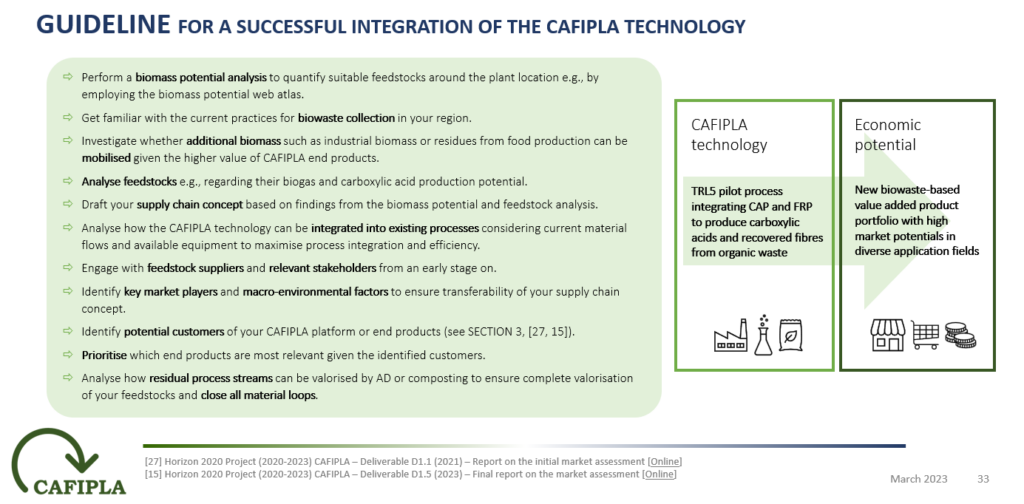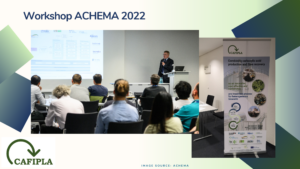New Guideline for the succesful integration of the CAFIPLA technology platform
The growing demand for biomass to feed the production of biochemicals, bioenergy and biobased materials entails the potential for conflicts regarding e.g., its optimal use or sufficient supply. Biowaste will become increasingly relevant as abundant and sustainable bioresource to ease trade-offs between industrial and environmental interests and the competition for increasingly scarce bioresources.

The newly released “CAFIPLA Guideline for Successful Integration of the Technology Platform” outlines opportunities and challenges that must be considered in moving towards implementation of the concept:
- Introduction: Biowaste recycling towards a circular bioeconomy
- The CAFIPLA concept and technology requirements
- Economic potential of the CAFIPLA product portfolio
- Chances and challenges for implementation of the CAFIPLA technology
- Conclusion and outlook for implementing CAFIPLA
The requirements of the CAFIPLA technology are evaluated, considering supply chains and technical feasibility and highlighting the economic added value of the diverse biowaste-based end product portfolio.

Based on an overarching PESTEL analysis clear recommendations are provided to accelerate biowaste valorisation and the circular transition. With roughly 20,000 biogas plants in Europe and an estimated potential of 17 million tonnes of biowaste available for anaerobic digestion, the extensive implementation potential of the CAFIPLA technology is evident. Next steps must address the scale up of the technology to unlock biowaste as a raw material for bioeconomic value chains.


